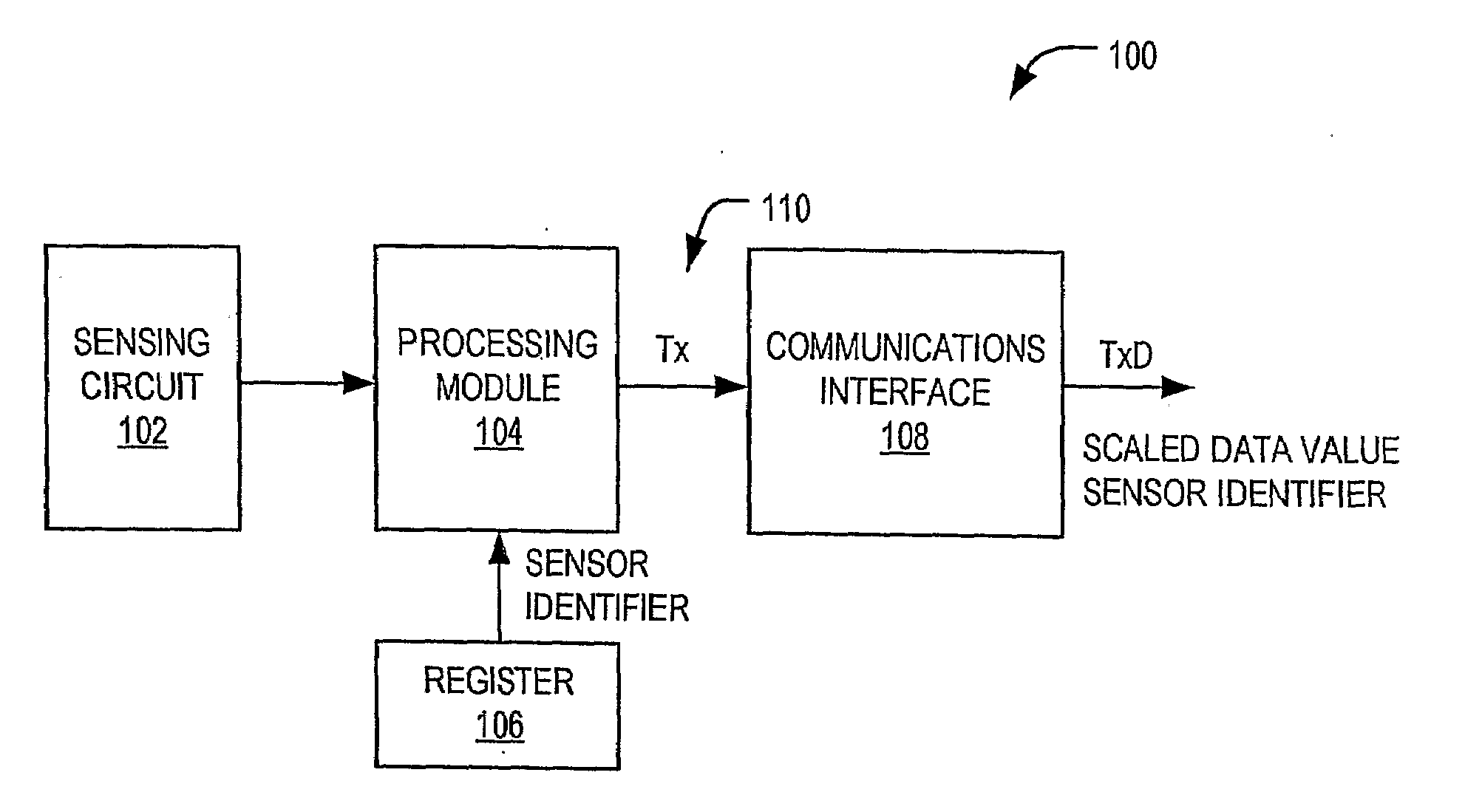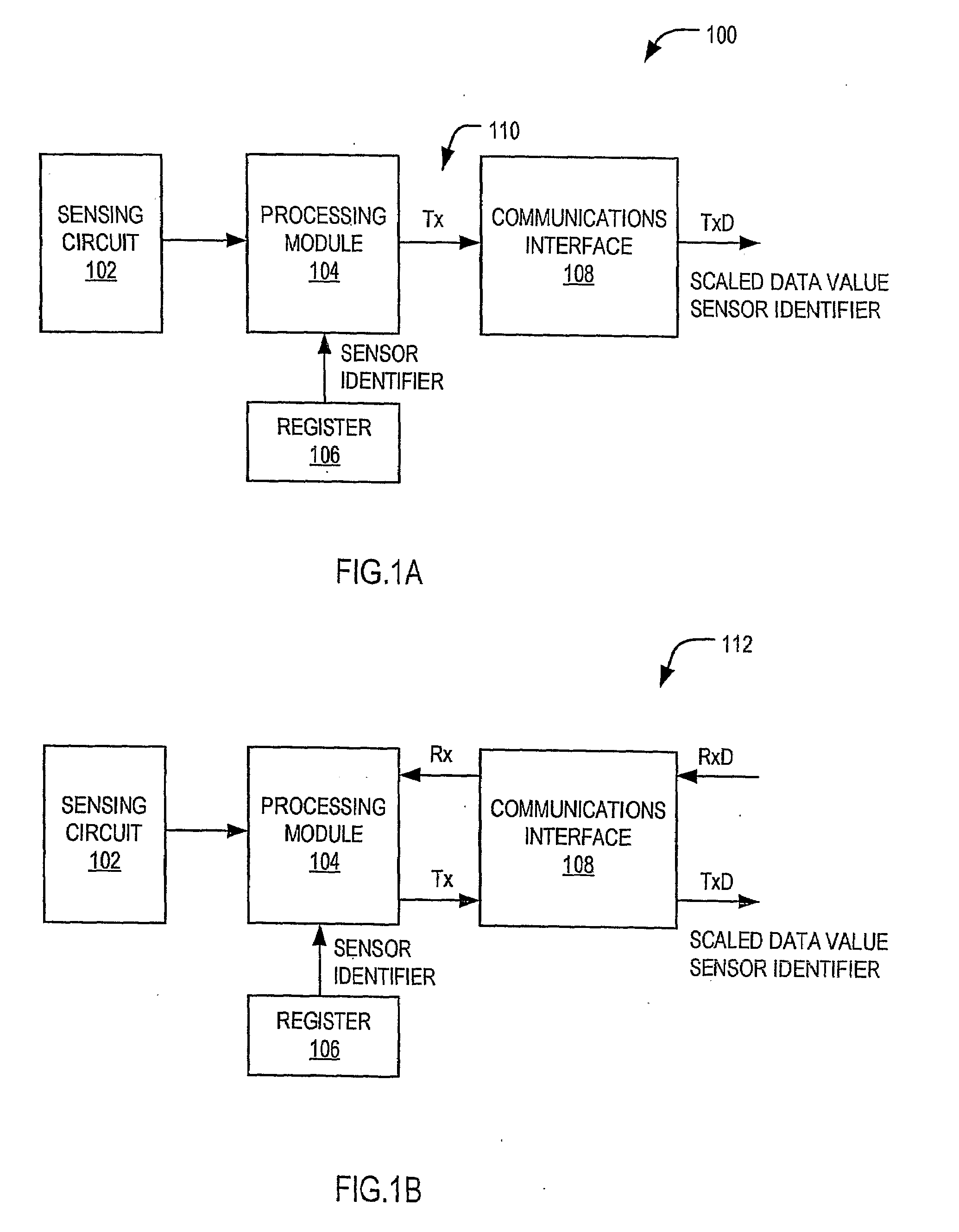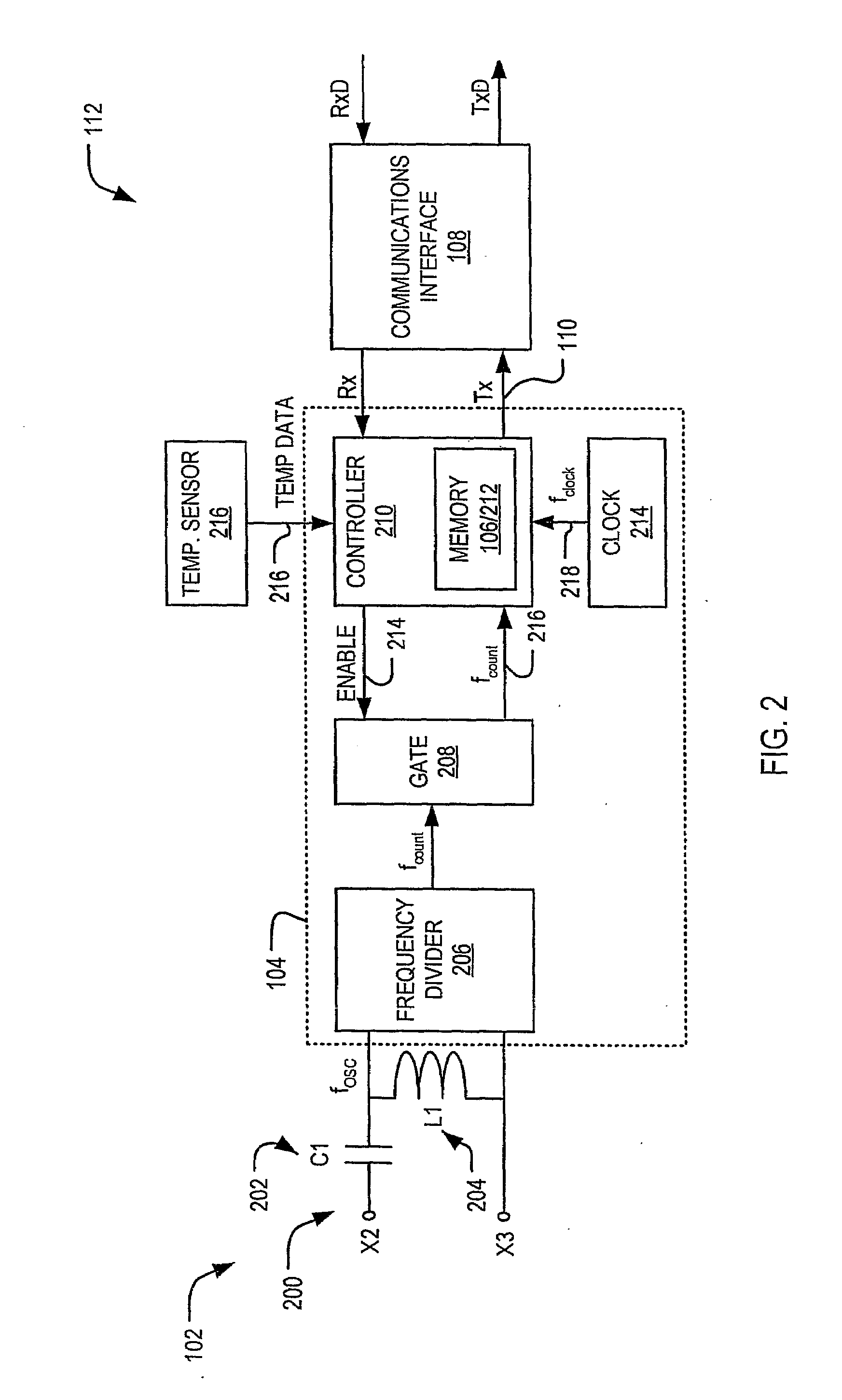Soil moisture sensor with data transmitter
a technology of soil moisture and data transmitter, which is applied in the field of sensors, can solve the problems of reducing the accuracy of sensed information and being unable to identify the configuration of the sensor
- Summary
- Abstract
- Description
- Claims
- Application Information
AI Technical Summary
Benefits of technology
Problems solved by technology
Method used
Image
Examples
example 1
ASCII Output Mode
[0102]In this mode the sensor 112 responds to polled commands from the external communications device and respond accordingly with data formatted in simple ASCII text strings. The sensor identifier for this mode is a simple two-digit ASCII number in the range of ‘00’through ‘98’. The address ‘99’ is reserved as a broadcast address that will require all sensors connected to the external communications device to respond. The ASCII output mode has no check summing or error checking and is typically used for short distance communications.
example 2
Binary Output Mode
[0103]In this mode the sensor 112 implements a binary ‘IP addressed’ type of protocol that enables data-packets communicated form the sensors 112 to be sent via intermediate telemetry / communication channels and yet still retain the sensor's applicable engineering units and or scaling. It is envisaged that such a protocol will enable the communication of digital data in a format that supports ‘plug n play’ type capabilities.
[0104]Additionally, in this mode, the sensor 112 has the ability to make autonomous readings without an external communications device invoking a sensing cycle. A sensor 112 that has the ability to make autonomous readings is expected to enable immediate control of third party equipment in response to changes in moisture levels of the soil medium.
[0105]As explained previously, the actual sensor readings may be averaged statistically, for example by a simple IIR filter (moving average), after which the immediate and averaged values are stored. The...
example 3
[0109]In the binary mode, a data output format protocol is for communications between a sensor 112, or plural sensors, and one or more external communication devices (herein referred to as a ‘data node’). More specifically, in the binary output mode, the data output format includes a binary data stream of packets, which can be either a request, or a response to a request from a data node.
[0110]On receipt of a data communication from a sensor 112, the data node recognises the start of a data packet (herein referred to as a ‘message’) by a synchroniser (in the present case, ‘0×AA’). In this respect, in this example all messages begin with a synchroniser as the first byte of a ‘packet header’. As will be appreciated, a message may contain one data packet, or plural data packets.
[0111]In the present example, request packets begin with a synchroniser and have at least eight bytes. On the other hand, response packets begin with a synchroniser and also contain a...
PUM
 Login to View More
Login to View More Abstract
Description
Claims
Application Information
 Login to View More
Login to View More - R&D
- Intellectual Property
- Life Sciences
- Materials
- Tech Scout
- Unparalleled Data Quality
- Higher Quality Content
- 60% Fewer Hallucinations
Browse by: Latest US Patents, China's latest patents, Technical Efficacy Thesaurus, Application Domain, Technology Topic, Popular Technical Reports.
© 2025 PatSnap. All rights reserved.Legal|Privacy policy|Modern Slavery Act Transparency Statement|Sitemap|About US| Contact US: help@patsnap.com



